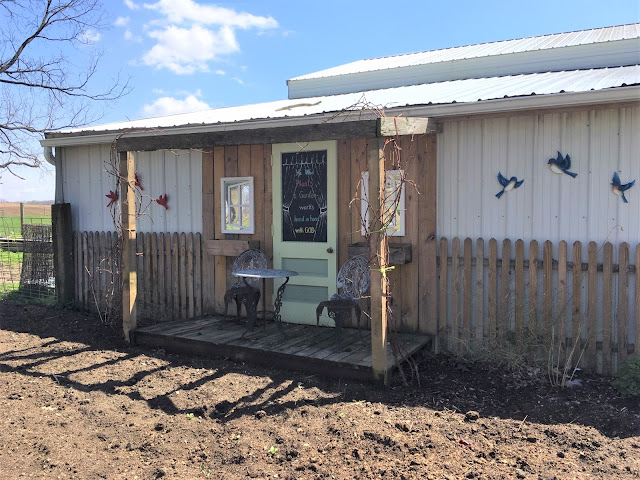Wandering around Amish Indiana can be confusing...
There are women dressed ‘plain,’ but with clearly not-Amish
head coverings (the local Amish all wear the same large, white, square head
covering, shown below); there are women dressed in Amish-style dresses but in
print fabrics. There are the Mennonite
women, who generally dress in t-shirts, long denim skirts, and tennis shoes and
wear a “doily” on their heads... How do
these groups fit into the overall scheme of things?
I’m going to oversimplify, because most of my readers don’t
want a theological treatise!—just a few hints to clear the confusion a little. So, bear with me.
Firstly, “Amish” in this area (northeastern Indiana)
generally means “Old Order Amish”—that is to say, plain-dressing,
horse-and-buggy Amish. This is the predominant group here in Lagrange/Elkhart County by far, with a population of about 30,000. (My network of friends here are all Old ORder Amish.) They have church in their homes, have large families, practice shunning for baptized adult church members who leave, chose not to use most forms of electricity, don't watch TV or movies, and rarely interact with most of mainline American culture. Posing for photos is against their religion, and they are extremely uncomfortable with having their pictures taken even casually.
Other areas in Indiana and beyond have groups with the word “Amish” in their names who are not as conservative as the Old Order Amish. There are “New Order Amish,” and “Beachy Amish,” who are dress very plainly but are a bit more like the rest of us in lifestyle (car ownership and electricity in their homes, for example).
But there is a new thing springing up around here… Where does an Amish person or family from this area go to
worship when they leave the Amish faith, but they still want to live more
plainly and conservatively than the rest of us?
To meet this need, an old term has been resurrected and put to a new
use—“Amish Mennonite.”
One hundred years ago, “Amish Mennonite” used to be just
another term for “Amish”—but the term hasn’t been used that way for quite a
while. The new use of the term refers to
churches such as Rosewood Fellowship in Middlebury, Indiana.
It’s not always easy leaving the Amish, especially for those
who don’t leave as young people who haven’t yet joined the church (this does
not result in shunning)—but rather as an Amish family in which the parents
might be in their thirties or forties and are leaving the church with their children (this does result in shunning).
Many become Mennonites, or join other denominations—but the
most conservative ones often transition into an Amish Mennonite church like
Rosewood. There, they live under some of
the same lifestyle restrictions they are used to, such as male leadership in
home and church; non-resistance (pacifism); women’s head coverings; no radio (usually) or
television; no musical instruments in church; and marriage for life.
Are these churches “in fellowship” with the Old Order Amish
churches? No… but it gives the ex-Amish
somewhere to meet and worship with others who are in the same situation that they
are. One formerly Amish woman told me
that all but one person at her new church speak Pennsylvania Dutch (the
language of the Amish.) They're not Amish, but they're not yet ready to call themselves "Mennonites" either.
As far as the Mennonites—I’ll be brief: There is a huge spectrum of
plain/conservative vs. mainstream/liberal groups in the Mennonite
denomination! The most conservative are
the horse-and-buggy Old Order Mennonites, and at the other end are churches
that are indistinguishable in dress and lifestyle from mainline Protestant
churches. Donald Kraybill says in his
book “Simply Amish” that there are sixty different subgroups of Mennonites in
America today!
And then there are the “German Baptists”—who are not
connected with the Baptist denominations that most of us are familiar
with. German Baptists are also known as
“Dunkards,” and over the years, they have split into a number of smaller groups
with names such as “Old German Baptist Brethren,” “Old Baptist German
Brethren,” and “Dunkard Brethren.” (Check
Wikipedia for more.) Around here, they
live in the Nappanee area, but they can be seen around Shipshewana, especially
working at the Rise N Roll bakery. The
women wear Amish-type dresses but in printed fabrics, and their white caps are
a bit smaller and more transparent than the Amish ones—see below. They drive cars and wire their homes for electricity, but most don't own televisions or radios.

Old Order German
Baptists drive cars, usually black, they have electricity (but no TV), and the
women are encouraged to help supplement the family income by working in the
home, either by making Amish Quilts to sell, providing quilting services, or
running a small dry goods store (fabric/general merchandise). The ladies dress
plain, by wearing below-the-knee dresses in fabrics with small prints of
flowers with a modesty cape and matching apron, and a loose weave (organdy almost
like tulle) head covering.
However—I saw a woman dressed like the above picture the other day and asked her if she was Old Order German Baptist, and she said she was Old Order Mennonite (and invited me to her church). So, the two groups must dress in a similar manner. Old Order Mennonites differ in several ways from the Amish. They worship in churches (not in homes like the Amish), and some are no longer horse-and-buggy. Their theology and lifestyle are not quite as conservative and old-fashioned as the Amish.
There are more “plain” groups and sub-groups to be found in
Amish Indiana—but I’ll stop at that, since I’ve told you all I know!










